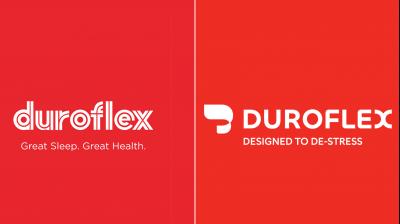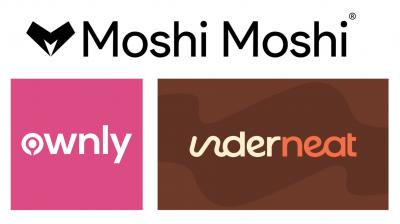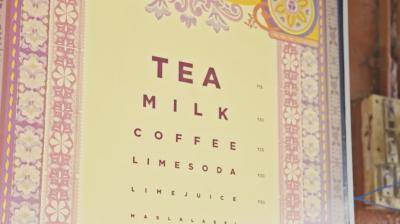Global advertising spend is now projected to grow 6.2% in 2025 to USD 1.16 trillion - a downgrade of 0.5 percentage points from Warc’s March forecast, as trade tensions, sector-specific slowdowns, and shifting geographic strategies redefine the advertising landscape. Warc’s latest global ad spend outlook for Q2 2025 highlights a cautious sentiment across key markets, particularly the US, as brands grapple with mounting tariffs, supply chain disruption, and declining consumer confidence.
Key highlights
• Growth forecasts for advertising spend have been downgraded further this year (-0.5pp to +6.2%) following an initial USD20 billion cut in March
• Key sectors such as retail (-6.1%) and automotive (-4.0%) are expected to cut ad budgets in the wake of mounting tariff pressures on supply chains
• Retail media set to be fastest growing advertising medium this year (+14.4%)
• Automotive ad spend down 4.0% this year as manufacturing stalls and key players pare back on brand building
• Retailers set to reduce ad spend by 6.1% as margins tighten
• Alphabet, Amazon and Meta are set to take a combined market share of 54.7% excluding China this year – equivalent to USD 524.4 billion – rising to 56.2% in 2026
• Global ad market growth is expected to accelerate to 6.5% next year, with a total of USD 1.23 trillion equivalent to almost USD 150 per capita
• Search to account for more than a fifth (21.5%) of the ad market this year, with spend rising 7.4% to USD 248.6 billion despite regulatory threats
• Social media – the largest single advertising medium globally – is poised to account for a quarter (25.8%) of all ad spend this year, at a total of USD 298.3 billion
• Ad growth set to slow markedly among tech & electronic and consumer packaged goods (CPG) brands as barriers to trade impair access to components.
Pure play internet – encompassing social media, retail media, online display, online classified and paid search – grew 11.5% in the first quarter of 2025 to USD 195.2 billion, equivalent to 70.8% of all global ad spend. The growth rate is expected to ease to 9.9% during the second quarter and 8.9% over the second half of the year – to an annual total of USD 829.2 billion (+9.8% vs. 2024).
Alphabet, Meta and Amazon’s combined share of advertising spend outside of China is expected to reach 54.7% this year (+1.8pp vs. 2024) with an aggregated total of USD 524.4 billion. This share is set to rise further – to 56.2% – next year.
Within the pure play internet total, search advertising spend is forecast to rise 7.4% this year and 6.8% next, by when the market would be worth USD 265.5 billion – equivalent to 21.5% of all spend, up from 21.2% in 2024.
Within the paid search total, Google’s expected USD 213.3 billion take would account for 85.8% of the market this year. The embedding of artificial intelligence into the search journey stands to disrupt ad revenue models, but Google's dominance in search advertising will likely persist in the near term, aided by SMEs.
Social media is now set to account for over a quarter of all ad spend this year. A strong first quarter rise of 14.9% precedes an expected slowdown, with growth averaging 11.2% over the coming three quarters as tariffs begin to impact Asian brands disproportionally. The social market is still on track to grow 12.0% to USD 298.3 billion this year.
Meta’s ad business is forecast to grow 12.6% to USD 142.1 billion this year, a cooling from the 18.4% rise recorded in 2024.
Retail media is expected to be the fastest-growing medium tracked by WARC this year, with an anticipated rise of 14.4% to a total value of USD 176.2 billion. This represents a 15.2% share of global ad spend this year.
Amazon’s retail media ad business grew 21.0% to USD 13.3 billion during the first quarter, accounting for a third (33.4%) of the global retail media market. Warc projects Amazon’s ad income will grow by 16.1% to USD 60.6 billion this year. A further rise, of 14.9%, is forecast next year, giving Amazon a 35.4% of global retail media spend and 5.7% of all advertising spend worldwide.
Global video advertising spend is forecast to decline by 2.6% in 2025 to USD183.9 billion, equating to 15.9% of all spend this year. The contraction is driven by a continued decline in linear TV, which still represents over three-quarters of the total video market.
Linear TV spend is expected to fall by 6.3% this year – a drop exacerbated by 2024 major sporting and political events. Notably, 2025 marks the first year that retail media will command a greater share of global ad spend than linear TV.
Video-on-demand (VOD) advertising is forecast to rise by 13.2% to USD 39.9 billion, a downgrade from the 15.4% projected in March. Within this, Netflix is due to see ad billings double this year (from a small base) due to the relative resilience of its ad tier during economic downturns.
The automotive industry invested USD56.8 billion in advertising last year with almost a quarter (22.9%) going to premium video formats. However, budgets are shifting from video towards digital platforms, with automotive spend on social ads surpassing linear TV for the first time in 2025.
Despite Warc’s projected 4.0% cut in automotive advertising spend this year (an improvement on the 7.3% originally projected in March), the sector should rebound next year with a 7.5% rise pushing spend to a total of USD 58.6 billion.
Retail, with projected ad spend of USD 166.1 billion this year (14.3% of the global ad market), faces a fall of 6.1% from 2024 levels. This largely reflects impending US trade tariffs on key goods and raw materials, which are poised to increase costs for global retailers, particularly those heavily reliant on Chinese imports such as Amazon and Walmart.
The tech and electronics sector is expected to spend USD 90.3 billion on advertising this year. This year-on-year rise of 5.5% represents a cut from the +6.2% forecast in March, and is a sharp slowdown from the 24.3% rise recorded last year. Tariffs are driving the sector to adjust go-to-market strategies, shifting investments toward less-affected regions or different product lines to buffer against hardware margin erosion.
Consumer Packaged Goods (CPG) companies experienced their weakest first quarter sales revenues since the pandemic. Further, with tariffs reaching as high as 145% for Chinese imports and additional tariffs on goods from Canada and Mexico, CPG companies are facing major disruption to their established supply chains.
Warc expects core CPG sectors, such as soft drinks (+7.1%), toiletries & cosmetics (+7.2%) and household & domestic (+4.2%) to record growth in advertising spend at a global level this year, though all see a significant slowdown from 2024. Taken together, the CPG sector is expected to increase advertising spend by 6.7% this year to a total of USD 200.5 billion.
James McDonald, director of data, intelligence and forecasting, WARC, and author of the research, said, “The latest downgrade is attributable to a reticence to commit ad budgets across key markets in the second quarter. This cooling is underpinned by tariff trepidations and ebbing business and consumer confidence, prompting advertisers to front-load budgets and reallocate spend geographically, particularly towards Canada, Australia, and Europe.”
He further added, “Trade tensions are forcing major sectors to rethink their ad strategies. Automakers are cutting back amid rising costs and a pivot to performance media, while retailers tighten budgets as tariffs squeeze margins. Tech firms face growing uncertainty despite continued investment, and CPG brands are leaning into retail media as supply chains come under pressure. Across the board, agility is the new imperative.”
Warc’s latest global projections are based on data aggregated from 100 markets worldwide, and leverage a proprietary neural network which projects advertising investment patterns based on over two million data points.












